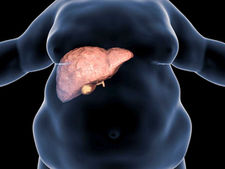
Eswl Treatment
A stone is a hard mass developed by crystals from urine in the urinary tract. It can be found in the kidney or ureter (the urinary tract leading from the kidney to the bladder). Shock wave lithotripsy (ESWL) is done with a machine that breaks stones from outside the body.
The aim is treatment without the need for surgical intervention. Focused shock waves (short-signal high-energy sound waves) are transmitted from the skin to the stone to break the stone. The stone absorbs the energy of the shock waves and breaks it into small pieces. The particles are then excreted through urine. The success of the ESWL method varies depending on several factors, such as the characteristics of the stone and body structure.
Before any procedure is performed to get rid of kidney stones, the size of the stone, its location and the anatomy of the kidney are determined.
The medications the patient uses, whether he or she has a urinary tract infection or high blood pressure should be investigated. There should be no infection in the urinary tract, and if there is, it should be under control with medication.
The patient generally does not feel pain or discomfort during the treatment. If there is pain, it can be controlled with painkillers. The patient does not need to receive anesthesia. Sessions last approximately 30 minutes and the patient can return to normal life immediately after the procedure. An ESWL device consists of imaging/focusing and sound wave generation units.
The stones are visualized fluoroscopically (with X-ray) or ultrasonographically and focused for effective crushing. Using these methods, sound waves are focused on the stone inside the body. In one session, approximately 2000 shock waves are sent to the stone and the stone is broken. While soft stones are broken in one session, second or third sessions may be required for hard stones.
Shock waves are created with electrical energy for the device. These shock waves occur in a balloon filled with water, and since it can move in water, they are transferred to the body through the balloon. The waves focused on the stone through the focusing process concentrate on the stone and break it.
These waves do not harm the body, but when transmitted to a stone with a different structure, it causes the stone to break. When deciding on stone treatment, treatment options are listed by taking into account factors such as the size of the stone, the location of the stone, the patient's other diseases, and the component (content) of the stone.
FOR INFORMATION AND APPOINTMENT, YOU CAN LEAVE YOUR NUMBER OR ASK OUR EXPERTS
YOU CAN LEAVE YOUR NUMBER FOR INFORMATION AND APPOINTMENT AND ASK QUESTIONS TO OUR EXPERTS



-04.png)
-06.png)
-05.png)
-08.png)
-07.png)























